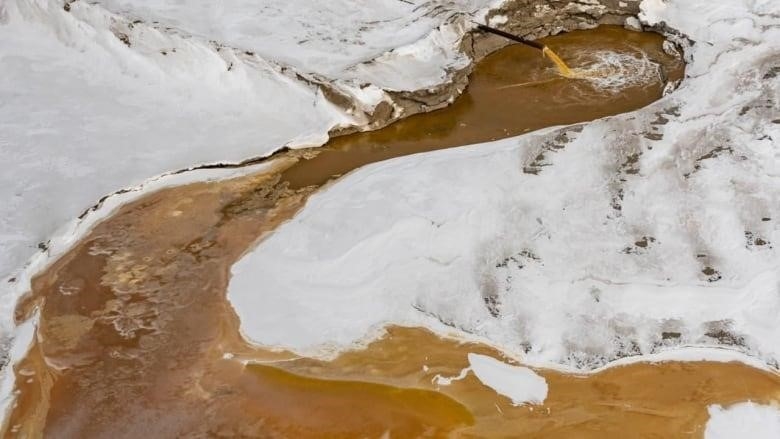
Three investigations are now looking into what caused the spill and what was said about it
A leaked document shows that the Alberta government waited a month before calling for an emergency response to one of the biggest spills of oilsands tailings in the province’s history.
The document, which was obtained by The Canadian Press, shows that the province didn’t start an emergency response until First Nations chiefs in the area talked about how they were told about the releases from Imperial Oil’s Kearl mine, which is about 70 kilometers north of Fort McMurray, Alberta.
The document also gives new information about how the government talked about and responded to the spills, which are now the subject of three investigations.
“It doesn’t surprise me at all that the province waited more than a month to start its emergency response,” said Chief Alan Adam of the Athabasca Cree First Nation, which harvests in the area.
“The provincial government is used to letting us down.”
In May, it was found that a pond in Kearl was leaking discolored water, which turned out to be groundwater contaminated with oilsands tailings.
First Nations were not told about this investigation until February 7, when the Alberta Energy Regulator gave Imperial an environmental protection order after another release of 5.3 million litres of industrial wastewater, including some tailings from a containment pond.
People heard about that order because it was made public.
Alberta Environment Minister Sonya Savage has said the protection order was how she first learned of the problem.
On March 2, chiefs of First Nations in the area said they hadn’t been updated since the first notice, even though their people were still hunting, fishing, and gathering plants in the area. This made people pay more attention to the releases.
Adam and the Chief of the Mikisew Cree First Nation, Billy-Jo Tuccaro, both said they no longer trusted the regulator.
On March 7, five days after the spill, Alberta Environment started an emergency response because the spill had toxic levels of contaminants, including arsenic. It took three more days before emergency workers from the province could get to the site.
This is what a March 23 document called “Kearl Oil Sands — AEPA Response Summary and Drinking Water Evaluation” from Alberta Environment and Protected Areas shows.
A time line of the department’s response shows the dates.
Alberta Environment didn’t answer a question about why it took a month for an emergency to be declared and why it wasn’t declared until national media coverage.
Adam said that it’s a pattern of not caring.
He said that neither of the United Conservative Party government members who represent the area have talked to his band, even though both of them have important jobs.
Brian Jean is the minister of jobs, economy, and northern development, and Tany Yao is the parliamentary secretary for rural health.
Adam said in a statement, “You’d think this would be right up their alley.”
“Maybe there’s a bigger crisis going on in our area that they’re focusing on instead, but I don’t know about it.”
Marlin Schmidt, a New Democrat from the opposition party who is an expert on the environment, asked what led to the emergency decision.
“When (the releases) first came out in February, all we heard from the minister, the regulator, and Imperial Oil was that everything was fine and under control. After a month, we have a response to the emergency.
“What made everyone rush to help?”
The document has information about a long list of possible contaminants that were tested at the water intake at Fort Chipewyan. It says that at that point, the water is safe to drink because many of the toxins are at levels that are too low to measure.
There are no results for water samples that were taken near the release sites.
The Information Commissioner of Alberta, the province’s energy regulator, and the environmental and sustainable development committee of the House of Commons are looking into how the government has responded to the leaks.
This committee has asked the head of Alberta’s regulator and senior Imperial Oil officials to answer questions on April 20 and 24.
The regulator will check to see if it’s the agency’s job to evaluate an incident report and if both the regulator and the company used the right ways to talk to each other. It will also ask if the right steps were taken for investigation, compliance, and enforcement.
By the end of July, that report should be ready.
Schmidt said that the real problem is that groundwater keeps getting into the Kearl Pond.
“It’s good that they are thinking about being open and sharing information. But there’s another problem: the tailings pond looks like it’s leaking.”
Imperial has said that it is digging trenches and putting in pumps to catch more water seepage.
The government agency said it has asked other oil sands operators to look at how it controls its tailings ponds.
In an email, Teresa Broughton, a spokeswoman for the regulator, said, “At this time and based on our preliminary review, no issues have been found.”
